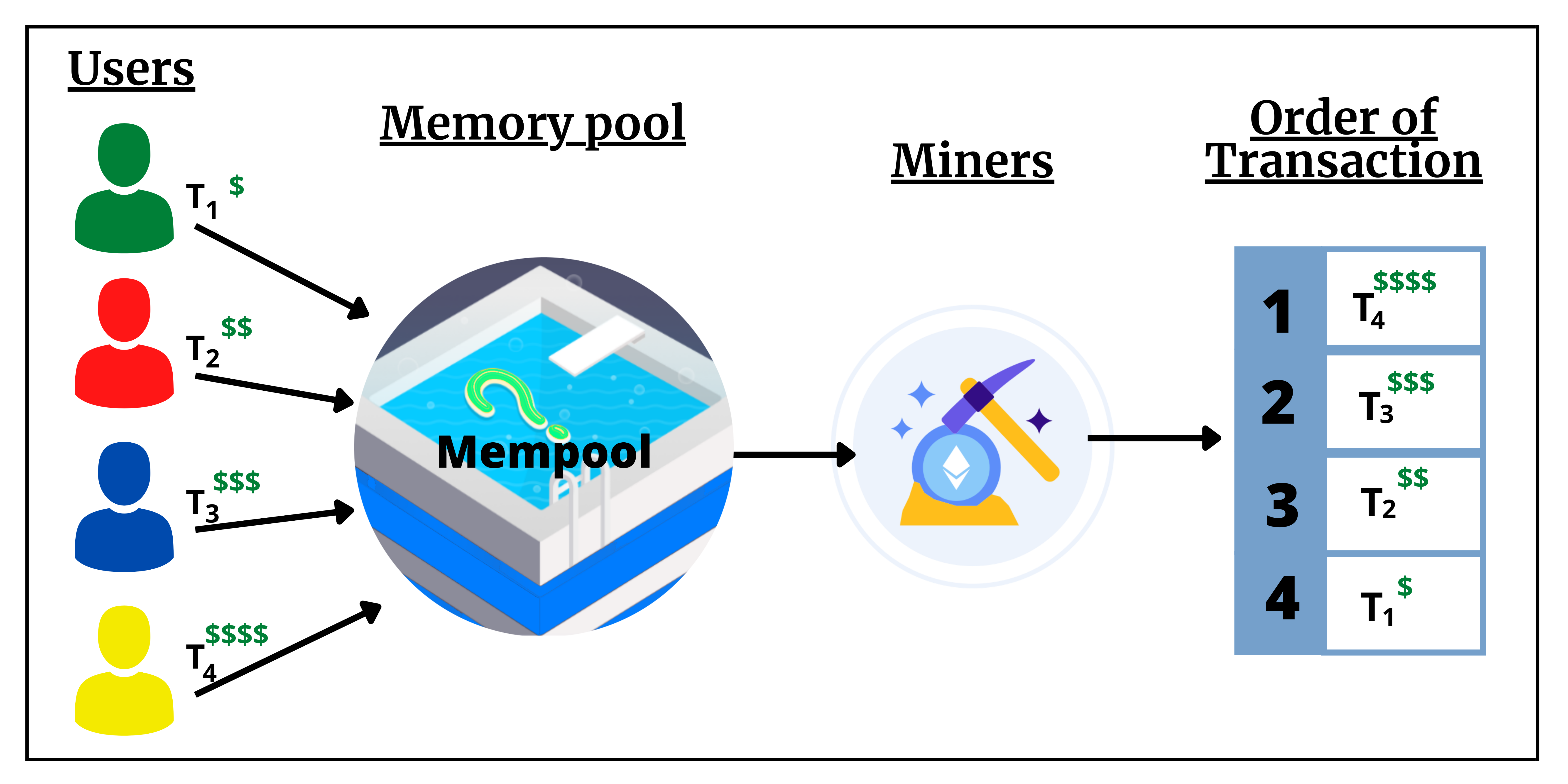WTF Ethers: 19. Listen to Mempool
I've been revisiting ethers.js recently to refresh my understanding of the details and to write a simple tutorial called "WTF Ethers" for beginners.
Twitter: @0xAA_Science
Community: Website wtf.academy | WTF Solidity | discord | WeChat Group Application
All the code and tutorials are open-sourced on GitHub: github.com/WTFAcademy/WTF-Ethers
In this lesson, we will learn how to read transactions from the mempool.
MEV
MEV (Maximal Extractable Value) is a fascinating topic. Most people are unfamiliar with it as it did not exist before the invention of blockchain that supports smart contracts. It's a feast for searchers, a friend of miners, and a nightmare for retail investors.
In blockchain, miners/validators can profit by packing, excluding, or reordering transactions in the blocks they generate, and MEV is a metric that measures this profit.
Mempool
Before a user's transaction is included in the Ethereum blockchain by miners/validators, all transactions gather in the Mempool. Miners also search for transactions with high fees in the Mempool to prioritize packaging and maximize their profits. Generally, transactions with higher gas prices are more likely to be packaged.
At the same time, some MEV bots also search for profitable trades in the mempool. For example, a swap transaction with a high slippage may be subject to sandwich attacks: the bot adjusts the gas price to insert a buy order before the transaction, and then sends a sell order afterward, effectively selling the tokens at a higher price to the user (front-running).

Listening to the Mempool
You can use the Provider class provided by ethers.js to listen to pending transactions in the mempool:
provider.on("pending", listener)
Mempool Listening Script
Below is a script that listens to the mempool.
Create the
providerandwallet. This time, we will use a WebSocket Provider for more persistent transaction listening. Thus, we need to change theurltowss.console.log("\n1. Connect to wss RPC")
// Prepare alchemy API, for reference visit: https://github.com/AmazingAng/WTF-Solidity/blob/main/Topics/Tools/TOOL04_Alchemy/readme.md
const ALCHEMY_MAINNET_WSSURL = 'wss://eth-mainnet.g.alchemy.com/v2/oKmOQKbneVkxgHZfibs-iFhIlIAl6HDN';
const provider = new ethers.WebSocketProvider(ALCHEMY_MAINNET_WSSURL);Because there are many pending transactions in the
mempool, sometimes hundreds per second, it is easy to reach the request limit of free RPC nodes. Therefore, we need to throttle the request frequency usingthrottle.function throttle(fn, delay) {
let timer;
return function(){
if(!timer) {
fn.apply(this, arguments)
timer = setTimeout(()=>{
clearTimeout(timer)
timer = null
},delay)
}
}
}Listen to the pending transactions in the
mempooland print the transaction hash.let i = 0
provider.on("pending", async (txHash) => {
if (txHash && i < 100) {
// Print txHash
console.log(`[${(new Date).toLocaleTimeString()}] Listening to Pending Transaction ${i}: ${txHash} \r`);
i++
}
});
Get the transaction details using the hash of the pending transaction. We can see that the transaction has not been included in a block yet, so its
blockHash,blockNumber, andtransactionIndexare all empty. However, we can retrieve information such as the sender addressfrom, gas pricegasPrice, target addressto, amount of ether sentvalue, transaction datadata, etc. Bots utilize this information forMEVmining.let j = 0
provider.on("pending", throttle(async (txHash) => {
if (txHash && j >= 100) {
// Get transaction details
let tx = await provider.getTransaction(txHash);
console.log(`\n[${(new Date).toLocaleTimeString()}] Listening to Pending Transaction ${j}: ${txHash} \r`);
console.log(tx);
j++
}
}, 1000));
Summary
In this lesson, we briefly introduced MEV and mempool, and wrote a script to listen to pending transactions in the mempool.